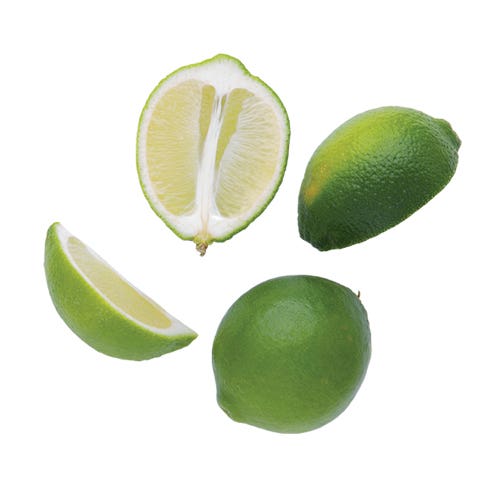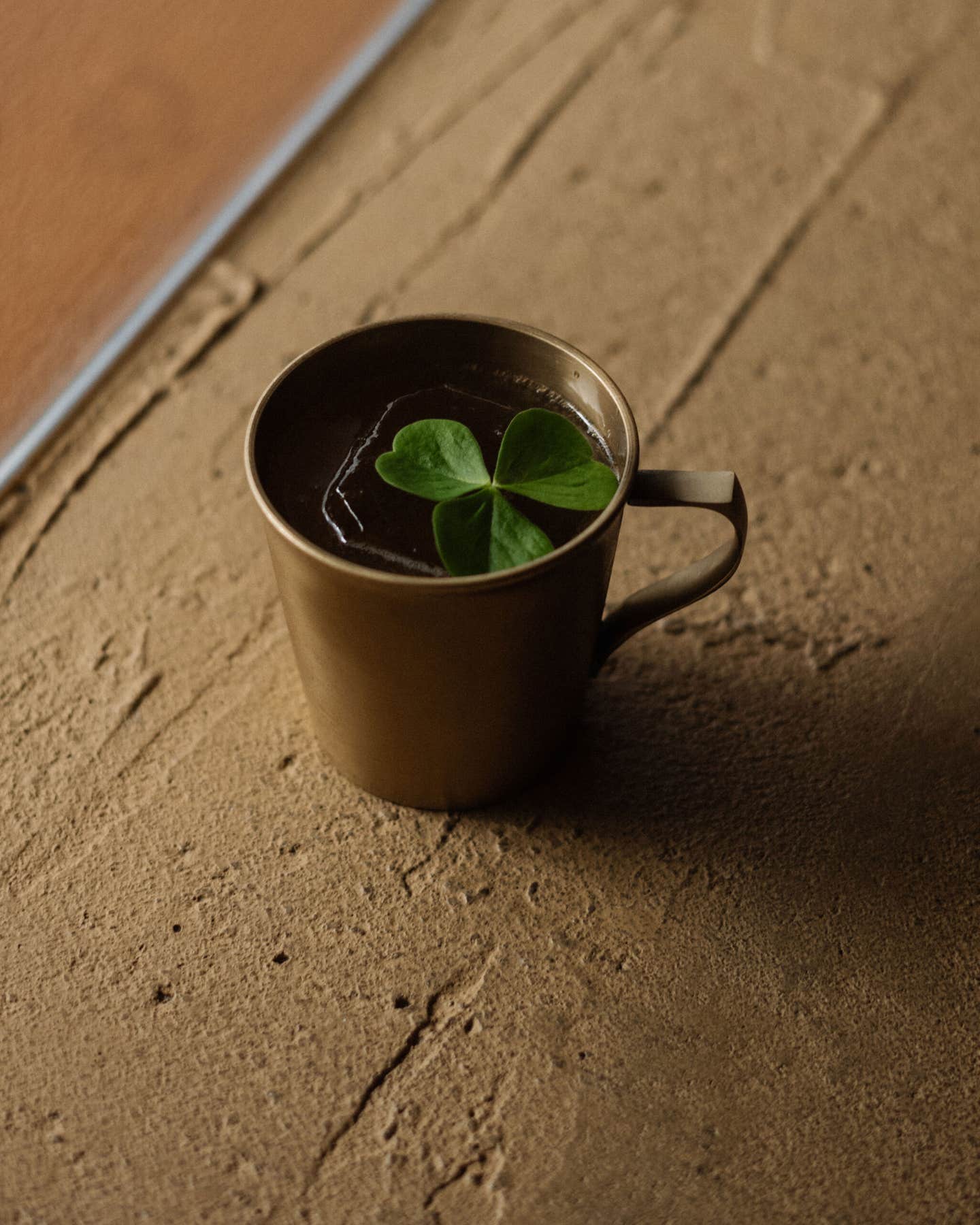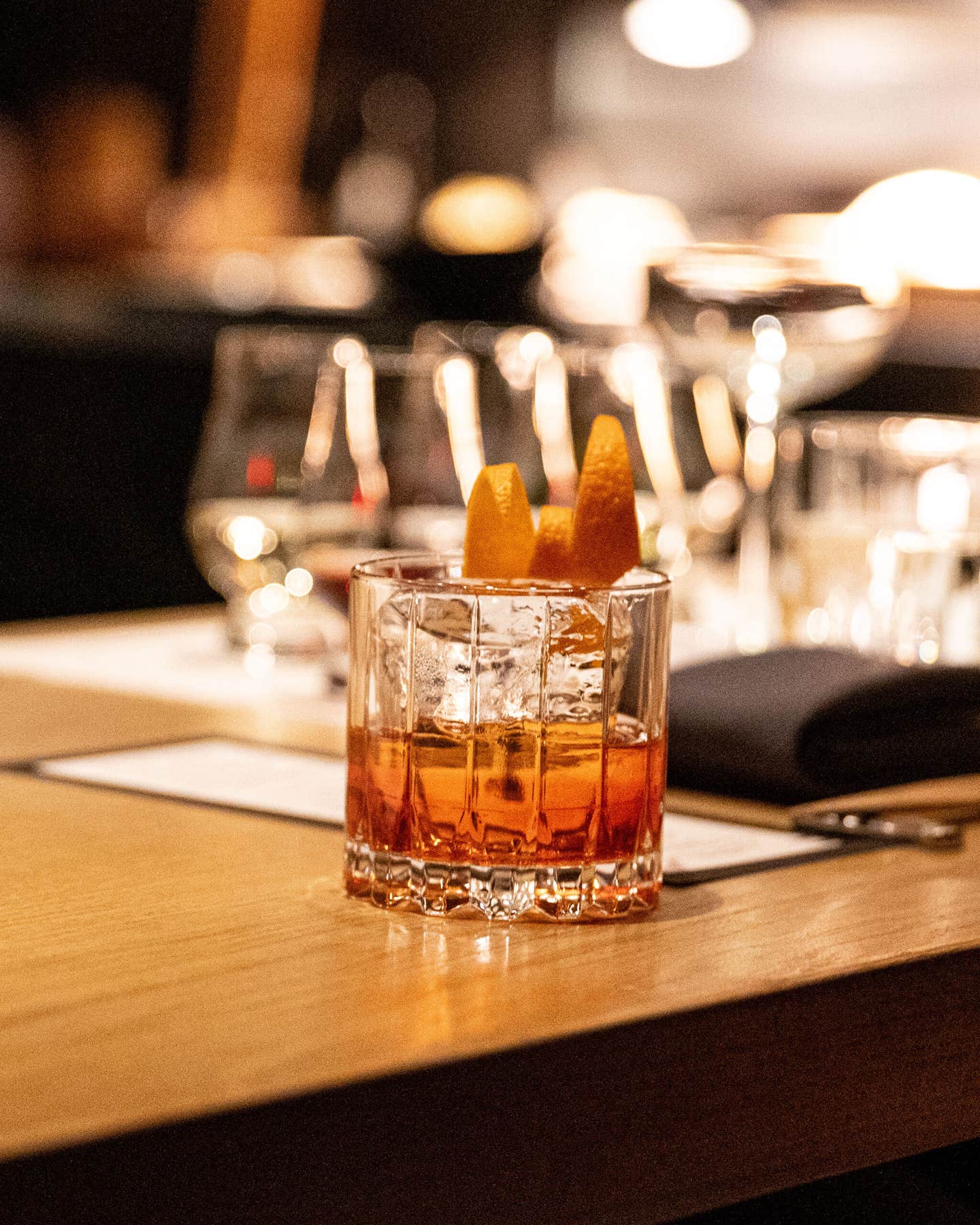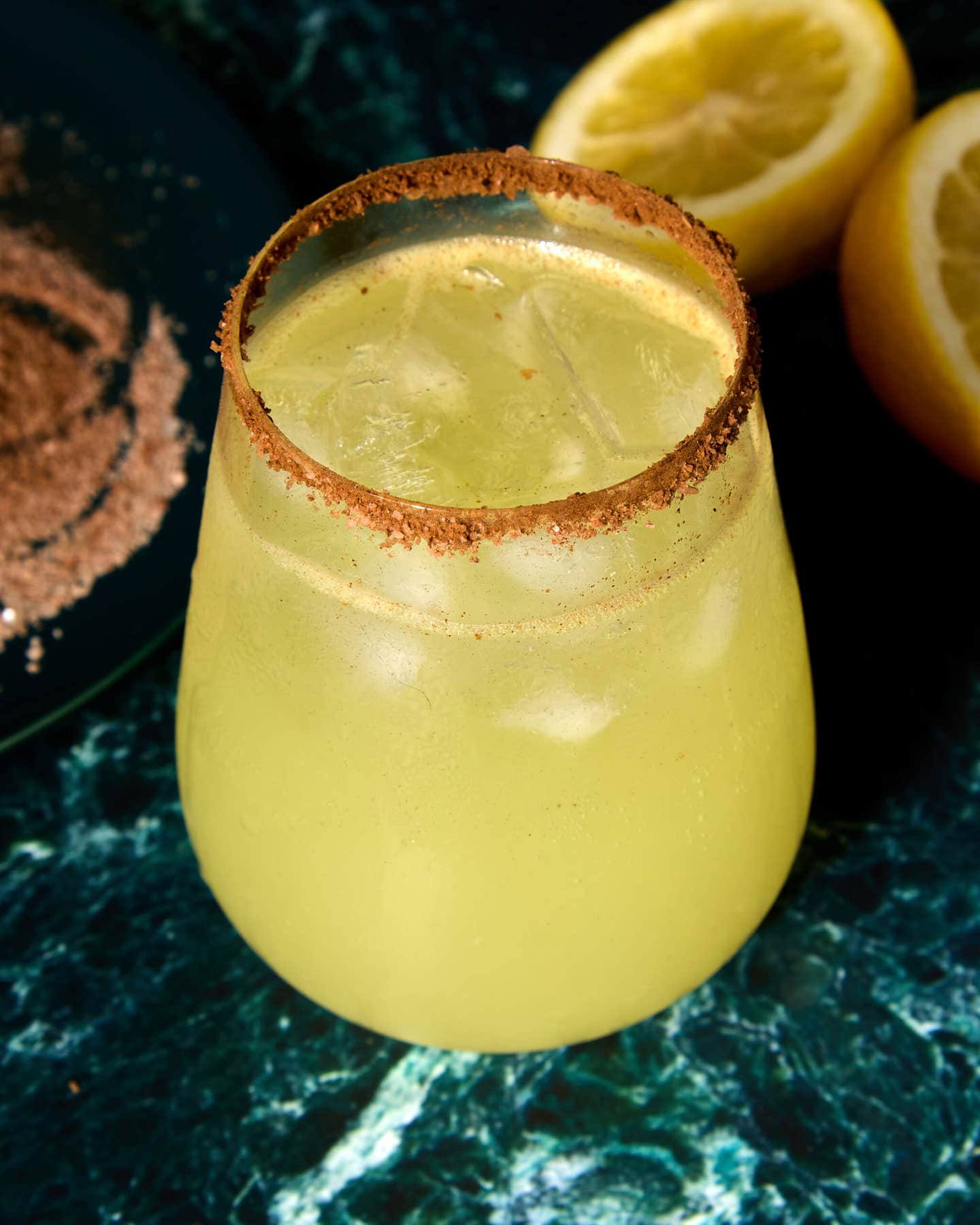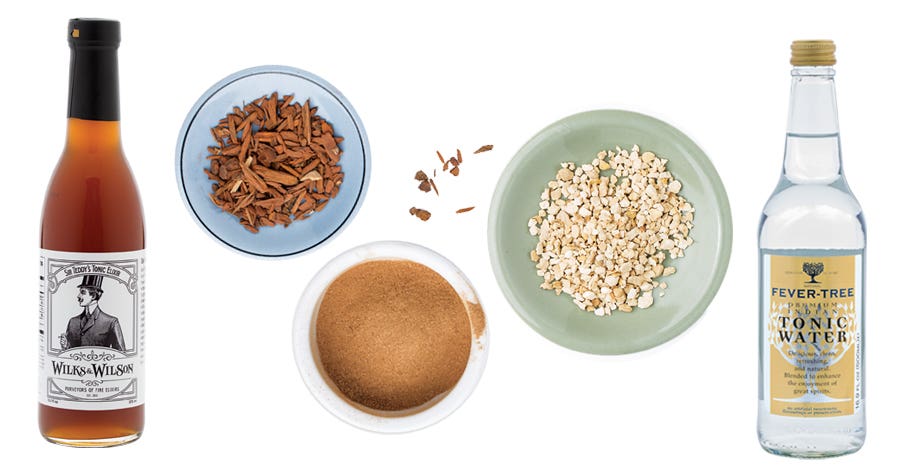
Miracle Cure
Though its roots lie in a colonial medicine, the gin and tonic is witnessing a modern-day makeover
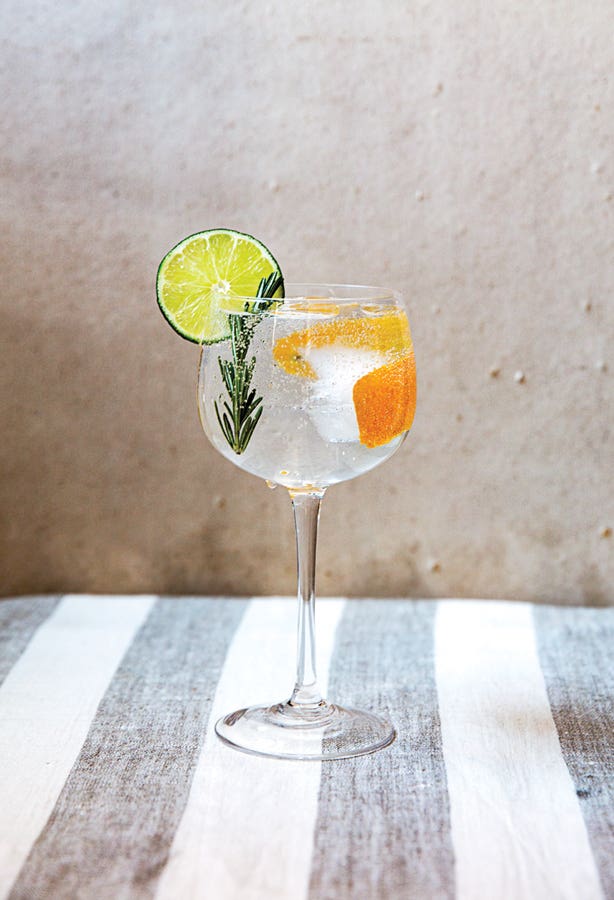
Last summer near Barcelona, I watched as David Rios of Bilbao's The Jigger Cocktail Bar beat out thousands of other mixologists to clinch the title of Diageo's World Class Bartender of the Year. After a week of baroque cocktails, Rios' finale, a gin and tonic, was an unexpected send-off, but the two-ingredient classic was garnished like a champion, with grapefruit, lemon, and lime peels, and a cinnamon stick lit on fire. It drove home a phenomenon I had been witnessing over the past few years: the elevating of the most straight-laced of cocktails.
In fishbowl-size snifters and dainty stemware, clear or in shades from pink to brown, and garnished with everything from snap peas to berries, this former wallflower—light, basic, satisfying—has blossomed into something complex, celebratory, and sometimes even loud. Curious about the simple cocktail's latent pizzazz, I did some investigating into its past. What I discovered is that the gin and tonic has a history far more fascinating than anyone would suspect.
It started with a South American cure. In the early 1600s, Jesuit missionaries in Peru observed that the locals used a tree bark to reduce fevers. The priests shipped some of the bark back to Rome, hoping to allay the deadly fever mal'aria—"bad air"—said to be caught from vapors in swamps, where the mosquitoes that were the real transmitters of the malaria parasite bred. Amid ineffectual treatments such as bloodletting and cobweb sucking, the bark—ground into a powder and mixed into wine, lemonade, or another sweet liquid to balance its alarming bitterness—proved not only a real cure, but a preventive as well.
The antidote quickly spread through Europe after the trees, soon named cinchona for the Countess of Chinchón, wife of a Spanish Viceroy to Peru, who was supposedly cured by the bark, were imported from the colonies. When the British took rule of India in the mid-19th century, they planted them around the subcontinent. Army officers there mixed quinine, the purified substance from the bark, with the British officers' spirit of choice: gin.
Back at home, mechanical carbonation, the infusing of a liquid with carbon dioxide gas, touched off a craze for bubbly drinks, including tonic waters—palatable medicines said to relieve indigestion and other maladies. The first tonic water containing quinine was patented in 1858 in England; the venerable Schweppes came along in the 1870s, just as those Brits in India were starting to see their gin and tonic as not just a medicine but a refreshing beverage as well. Since the British navy used limes to stave off scurvy, the citrus had long been paired with gin in such officers' drinks as the gimlet. It wasn't a stretch for someone to squeeze a brightening slice into a gin and tonic, and thus the traditional garnish was established.
The drink spread from India in the early 1900s. Advertising trumpeting its Englishness played a major role in its popularity in America in the 1950s, and it became a New England WASP favorite. Half a century later, Spain got in on the party. Encouraged by marketing from newer gins like Hendrick's, bartenders such as Rios went crazy for "gin tonic," serving it in oversize goblets with lots of ice and tonic—perfect for Spain's balmy weather. The garnish leapt from lime to a host of botanicals that amplify those used in gin: juniper berries, anise, lemongrass.
Recently, this baroque style of gin and tonic has been adopted by Spanish restaurants in the States. Some give the drink a fresh spin with berries and other fruits; at Miami's Barceloneta, the G&T is tarted up with muddled strawberries. Others choose savory elements that suggest the martini or bloody mary. Chef José Andrés offers ten variations at his restaurants, including the pink peppercorn—spiced Hierba.
All of these versions capitalize on the recent explosion of gin styles. The spirit is characterized by juniper, but beyond that, all bets are now off. Classics like Beefeater may be dry and piney, but new brands, such as Philadelphia's citrus-laced Bluecoat, are fruity and bright, or floral, like the cucumber-and-rose-flavored Hendrick's. Then there are the potent types once favored by British naval officers. Distilled to about 57 percent alcohol, Perry's Tot or Plymouth's Navy Strength adds a boozy wallop to the summer refresher. Bartenders pick and choose a gin with an eye toward its mixability. Dry Plymouth is a suitable partner for the ten dashes of spicy Angostura bitters in the version called The Pretty Tony from San Francisco's Wingtip, while peach-and-raspberry-infused Nolet's gin complements the fruit flavors in the Conquistador at nearby Coqueta.
Along with gin, tonic is undergoing a renaissance as well. Supermarket brands sweetened with corn syrup and sold in plastic that dampens carbonation have given way to artisan tonics in single-serving glass bottles. Bartenders and small producers have also begun making their own tonic syrups. Aromatic and not too sweet, these mix with plain soda water and gin in fascinating ways. At The Other Room in Lincoln, Nebraska, for instance, the same aromatics in Bombay Sapphire—raspberry-like orris root and peppery grains of paradise—are used to create a tonic syrup that helps the spirit sing.

Small-batch syrups like bitter-tasting Wilks & Wilson and snappy John's begin with cinchona bark rather than purified quinine, so they are brown in hue. They remind me that at the heart of every gin and tonic is a South American tree that helped save millions from a deadly disease. Now we just drink the stuff for kicks. Still, given a good gin, an intriguing tonic, and a handful of aromatic garnishes, I've found that I can whip up any number of enticing elixirs guaranteed to cure what ails me.
Keep Reading
Continue to Next Story
